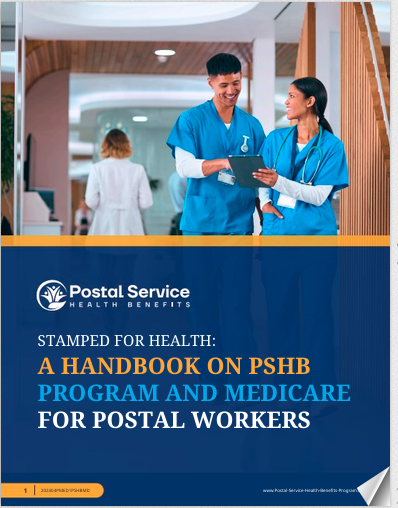Key Takeaways
-
You have access to a variety of tools in 2025 that simplify the process of choosing a PSHB plan tailored to your needs as a USPS employee or retiree.
-
Understanding the features, costs, and coordination with Medicare is critical, especially if you’re nearing retirement or are already Medicare-eligible.
Why Choosing the Right Plan Matters More in 2025
With the launch of the Postal Service Health Benefits (PSHB) Program in January 2025, you are no longer choosing from the traditional Federal Employees Health Benefits (FEHB) plans. The PSHB system is designed specifically for Postal Service employees and retirees, offering tailored options. Making the right selection impacts not only your healthcare access but also your long-term out-of-pocket costs and Medicare coordination.
Understand the PSHB Plan Categories
Before you start comparing plans, you should understand the structure of PSHB. Most plans fall into one of these general categories:
-
Low-deductible plans: Higher premiums, but lower upfront medical costs.
-
High-deductible plans: Lower premiums, but higher costs before insurance kicks in. These may be paired with a Health Savings Account (HSA).
-
Consumer-driven plans: Offer a fixed amount of annual funds for healthcare expenses and may suit those with low expected medical use.
-
Medicare-coordinated plans: Designed for retirees enrolled in Medicare Part B, offering reduced cost-sharing and enhanced benefits.
Start with the PSHB Plan Comparison Tool
The first step in choosing your plan is using the PSHB Plan Comparison Tool available through the U.S. Office of Personnel Management (OPM). This tool lets you:
-
Compare monthly premiums
-
View deductibles, copayments, and coinsurance
-
Filter by provider network, coverage type, and special benefits
-
Assess coordination with Medicare if you are enrolled in Part B
You can access this tool through the OPM or USPS benefits site. It updates during Open Season, which occurs annually from November to December.
Know Your Eligibility and Enrollment Windows
Choosing a plan is only half the equation—knowing when you can enroll is equally important. For 2025:
-
Open Season: Runs from November to December. You can enroll, change plans, or add dependents during this period.
-
Special Enrollment Periods (SEPs): Apply if you lose coverage, move to a new area, or become newly eligible for Medicare.
-
Turning 65 or Retiring: Triggers opportunities to enroll in Medicare and coordinate it with your PSHB plan.
You must act within the specific enrollment periods. Missing them could mean waiting another year or experiencing a lapse in coverage.
Don’t Skip the Medicare Integration Details
If you’re retired or soon to be and are eligible for Medicare, understanding how your PSHB plan works with Medicare is essential. In 2025:
-
Certain PSHB plans require Medicare Part B enrollment to receive full benefits.
-
Some plans offer partial or full reimbursement for your Medicare Part B premium.
-
Coordination can significantly reduce or eliminate deductibles, copayments, and coinsurance.
-
You will automatically receive drug coverage through a Medicare Part D EGWP (Employer Group Waiver Plan) if eligible.
If you retired on or before January 1, 2025, you are not required to enroll in Medicare Part B to maintain PSHB coverage, although it may still benefit you.
Use the PSHB Navigator Help Line
For one-on-one help, USPS retirees and employees can call the PSHB Navigator Help Line. This resource provides:
-
Clarification on Medicare requirements
-
Help with the plan comparison tool
-
Guidance on special enrollment scenarios
-
Answers about premiums, deductibles, and plan documents
This is particularly useful if you’re juggling complex family situations, have multiple dependents, or want reassurance before making your final choice.
Evaluate Prescription Drug Coverage Carefully
Even though PSHB integrates drug benefits with Medicare Part D, you should still pay close attention to the following:
-
Formulary coverage: Make sure your current medications are covered.
-
Preferred pharmacy networks: Some plans may have more favorable pricing for in-network or mail-order options.
-
Out-of-pocket limits: For 2025, Medicare Part D has a $2,000 cap on out-of-pocket drug costs.
Skipping this step can lead to unexpected costs for medications you rely on.
Estimate Your Total Annual Costs
Premiums aren’t the only cost you’ll face. Use the tools provided to estimate:
-
Annual premium contributions
-
Expected copayments for office visits and specialists
-
Cost of chronic medications
-
Deductibles and coinsurance for major services
-
Emergency room and urgent care fees
Many PSHB plans also offer cost estimators that simulate usage scenarios. Make use of them to forecast what your financial obligations might look like.
Confirm Your Provider Participation
Even the best plan won’t serve you well if your preferred doctors or hospitals aren’t in-network. You should:
-
Search the plan’s provider directory
-
Call your provider’s office to confirm participation
-
Ask about in-network labs, imaging centers, and pharmacies
This step is especially important if you live in a rural area or have ongoing care with specialists.
Check If You Need to Coordinate with Spousal Coverage
If your spouse also has health insurance—whether through another federal plan or private employer—you need to decide:
-
Whether to enroll separately or together in a Self Plus One or Self & Family plan
-
Which plan provides better coverage for both of you
-
How deductibles, networks, and prescription benefits compare
Use coordination worksheets or side-by-side plan comparisons to make this decision clearer.
Track Your Benefits Year-Round
Once you’ve selected a plan, don’t wait until the next Open Season to evaluate your satisfaction. Throughout the year, monitor:
-
Your plan’s Explanation of Benefits (EOBs)
-
Prescription costs and drug list changes
-
Provider billing errors
-
Changes to your health status or family needs
Many plans offer mobile apps or online dashboards to track benefits and spending.
Consider a Health Savings Account if You’re Eligible
If you enroll in a high-deductible PSHB plan, you may qualify to contribute to a Health Savings Account (HSA). In 2025:
-
Individual contribution limit is $4,300
-
Family contribution limit is $8,550
-
You can add an extra $1,000 if you’re age 55 or older
Funds in an HSA can be used tax-free for medical expenses and grow over time. This can be an effective way to manage future healthcare costs.
Understand Out-of-Pocket Maximums
In-network out-of-pocket maximums protect you from excessive costs. In 2025, these limits vary:
-
Self Only coverage: Up to $7,500
-
Self Plus One or Self & Family: Up to $15,000
Review what counts toward this limit, such as deductibles, copayments, and coinsurance, but not premiums. Once you hit the max, your plan covers 100% of in-network costs.
Watch for the Annual Notice of Change
Before each Open Season, you’ll receive a Notice of Change from your current plan. This document outlines:
-
Changes in premiums, copayments, or benefits
-
Provider network updates
-
Medicare coordination updates
Don’t ignore it. Comparing the notice to last year’s benefits can reveal subtle changes that affect your decision.
Stay Informed and Ask for Help When Needed
Navigating the PSHB system in 2025 doesn’t have to be overwhelming. You have more resources than ever before. If you’re unsure about any detail—whether it’s Medicare integration, cost estimates, or enrollment questions—seek help.
Make the Most of Your USPS Health Benefits Choices
Selecting your 2025 PSHB plan is not just about finding what’s cheapest—it’s about balancing affordability with access to care, Medicare coordination, and personal preferences. Use the tools available to you, review plan materials carefully, and stay engaged throughout the year. If you’re still unsure about what to do next, speak with a licensed agent listed on this website for expert guidance tailored to your situation.







